The Feud: The Hatfields and McCoys: The True Story Read online
Page 12
Joe Glenn, who was new to the area by way of Georgia, certainly appeared to have better prospects than Cap did. Nan had been fourteen at the time of their marriage. Two years later, however, Glenn was ambushed and riddled with bullets. Cap denied any responsibility for the murder, and some said the treachery was committed by a former business partner of Glenn’s. Whatever the case, the second time around, Cap got his woman, the widow Nan, with three boys as interest.8
THE HATFIELDS ONCE AGAIN CROSSED freely into Kentucky, though the indicted men usually ventured only in numbers and well armed. The bench warrants for their arrests were repeatedly issued but just as repeatedly returned “not found.” When there was an election, the Hatfields warned the Kentucky sheriffs not to bring the bench warrants to the voting precincts where they planned to show up. As these admonitions were heeded, nothing major transpired for several years.
The distress in the McCoy household, however, was palpable. Randall, who was a rapidly aging sixty-three, grew increasingly irked by the sight of the Hatfields going about their business as if nothing had happened. While Sally clenched her jaw and carried on tending to her family the way a mother had to, she was deeply distraught and occasionally in the middle of her chores broke down and convulsed in fits of grief. Tolbert’s widow, Mary, who had moved in with them, comforted and cared for her mother-in-law, suppressing her own heartbreak and rage to be strong for Sally and for Melvin and Cora. To make matters worse, she was engaged in a court battle with Tolbert’s business partner over the value of Tolbert’s stake in their timber operation. Over time, Sally grew stronger, but Mary slept and ate less and less. She began to waste away.9
Always brooding, and now more than ever, Randall regularly visited Pikeville, riding more than thirty miles over a rugged trail to complain to Perry Cline, a nephew by marriage. An attorney, Cline had escaped his youth on the Tug and, after losing his inherited land to Devil Anse, moved to Pikeville to pursue his ambitions in law and politics. He gave Randall reason to hope that something might still be accomplished through the legal system.10
These efforts by Randall did not go unnoticed by the Hatfields, who were greatly concerned that he might stir up more trouble in Pike County. As one of the largest and most influential families in the area, they let it be known through the grapevine that they were displeased, and, according to some, “harassed the McCoy family in every possible manner”; namely, through intimidation and the constant threat of violence. They thought if they could force the McCoys to leave the area, it would alleviate the pressure to prosecute those accused of killing the McCoy trio.11
It was during the following summer, in June 1884, that the next significant violence broke out. The Hatfields had decided that it would be in their best interests to terminate by any means Randall’s agitation of the legal authorities in Kentucky. By the family’s reckoning, justice had been served. The three boys had murdered a Hatfield, and they had paid the price with their own lives. The Hatfields could recite a litany of injustices perpetrated by the courts, sheriffs, the jail system, and state and federal authorities to justify having taken matters into their own hands, and they had a good many friends and allies who saw it that way too.
They resolved to keep an eye out for an opportunity and saw it come that June. Randall had been summoned to the Pikeville courthouse to appear at a public hearing regarding Tolbert’s timber interests. Randall’s son Calvin, or Cal, who acted as executor of Tolbert’s estate, had filed suits to establish Mary’s rights. The Hatfields, who had their informants, knew about the court date. They also knew that the route that Randall and Cal would take to Pikeville and back ran through remote parts between steeply sloping hillsides that provided ample opportunities for an ambush.
They resolved to kill them both.12
Heavily armed, Johnse, Cap, and Bill Tom Hatfield, Cotton Top Mounts, Mose Christian, and two other men hid in the brush on a mountainside. About thirty feet below them was the route that the McCoys would use to travel home. After everyone was in place, along came a young son of Tom Stafford, the justice of the peace who had been elected the same day that his brother-in-law Ellison Hatfield had been mortally stabbed. Cap came out of his hiding place, stopped the boy, and told him to go to the courtroom and bring back a description of the clothes Randall and Cal were wearing and the guns they were carrying and to keep mum about it all the while.
By the time the hearing ended, it was dusk. The participants filed out, and the two Scott brothers, Bushy and Hense, Randall’s neighbors who had been called as witnesses, were among the first to leave. The Scotts belonged to a well-liked family, one of the few in the area considered friends by both the Hatfields and the McCoys, and they would be traveling along the same route as Randall and some of the other McCoys. In fact, they set out on the road—actually just a bridle path—with Randall’s son Sam.13
At the site of the planned ambush, the Hatfield faction was antsy, their nerves on a hair trigger from waiting and watching all day. The light grew dim as the sun sank below the ridgeline. When they spied three men in the distance who seemed to fit the boy’s description, they presumed them to be the two they wanted—Randall and Cal—plus another. When the trio reached the predetermined spot, about fifty yards away, Cap gave the signal, and the Hatfields opened up. The travelers were riding three abreast, which made the firing angles more difficult. The horses were shot and killed. Sam had his hand on Hense’s right shoulder, and when a bullet pierced the shoulder, Sam felt the impact of flesh and bone bulge into his hand. In shock, the two men leaped together over the lower side of the slope and hid. Hense cried out that he had been hit. Bushy fired his rifle at the ambushers, and the shot whizzed across Cap’s chest, penetrating just enough to make it ooze blood. Bushy reloaded his gun and stepped to a scrub tree. As he raised the rifle, a slug drilled his right knee. He fell, writhing on the ground, dangerously wounded and bleeding profusely. Settling in the dust and clenching his eyes tight, he groaned in pain. More slugs exploded around him, covering him in dirt and dust. Biting his tongue, he lay as still as he could.14
As Truda McCoy told the story, Cal McCoy heard the shooting and came running on the double. He fired his two pistols to let his brother know that help was on the way. When the would-be assassins heard the shots, they fled in the dark.
They thought they had killed Randall, but in reality they had crippled Bushy for life, an injustice that not only caused more grief and resentment in the area but also raised the pressure on the Hatfields to get Randall, the primary instigator of opposition to them.15
This was not the only case of mistaken identity in the Hatfields’ efforts to be rid of Randall. In another incident, Cap shot Uncle Wall, not his own uncle but the Kentucky cousin who went by Uncle Wall. Spotting him from a distance of about two hundred feet and thinking he was Randall, Cap stepped behind a giant chestnut tree and fired. According to Uncle Wall’s grandson Basil Hatfield, “He shot grandpa, aimed to kill him, but some way or another the rifle made a long fire.” Instead of killing Uncle Wall, Cap shot him through the kneecap.
When he went to inspect the damage he had done, he found, instead of a wounded McCoy, an enraged Hatfield, kin by blood and marriage, wielding a buck knife. When Cap saw the deadly blade and the intent, he dodged back. “You cowardly thing!” Uncle Wall bellowed after hearing Cap’s fast attempt at an apology. “If you wanted to shoot [Randall] McCoy why didn’t you walk up to him like a man an tell him you was going to shoot. Why’d you hide like a hound dog and shoot somebody for?” Like Bushy Scott, Uncle Wall was crippled for life.16
SEVERAL MONTHS AFTER THE FAILED ambush of Randall and Cal, friends of both the Hatfields and the McCoys decided they should have a rendezvous to settle their differences—or, as Squirrel Huntin’ Sam put it, to “make friends and forget about it.” The plan was to meet at the Caney schoolhouse in Logan County and attempt to hash things out. Both parties were wary but willing to give it a go. The Hatfields arrived first at the schoolhouse, which was in West
Virginia. Randall and his friends pulled up at the far side of the Tug, choosing to feel things out before crossing over.
Squirrel Huntin’ Sam, whose wife, America, had just given birth to their firstborn, Sam Jr., on July 2, 1884, was with the Hatfields. Although a McCoy, the new father had friends in both families, and he made it known that he would not talk about either side to the other. But what he saw now made him incredulous and mad: Johnse had his rifle—a cylinder six-shot cap and ball—resting in the fork of a pawpaw. He was sighting it across the river at where the McCoys were gathered.17
“Johnse, what are you doing there?” asked Sam, towering over the preoccupied young man.
“Oh, I’m sighting across the river,” Johnse replied nonchalantly, as if there were no McCoys at the other end of the barrel.
“Now,” Sam said, “you put that gun up. Supposing you fire that gun and kill somebody, then you’d hang or be penitentiared for life.”
Johnse’s uncle Elias came over. Sam told him that he was trying to get Johnse to put his gun down. “Johnse, set that gun up against the schoolhouse,” Elias told his nephew, “or I’ll slap the damn face off you. Go on.”
Johnse grinned and put down the gun. His barely restrained desire to shoot was typical of the feelings on both sides. The two groups shouted to each other across the river, but emotions were still too raw and nerves too jangled for any type of reconciliation.
The McCoys rode away again, never having crossed the river.
Chapter 10
Taking Names and Keeping a List
1884–1886
While Devil Anse’s sons had stepped into the maelstrom of family hatred and now apparently had taken the lead, Devil Anse, to be sure, still quietly led from the rear.
Of the men who would eventually attempt to ride the Hatfield clan into the ground, two would be raised to superhero level by W. B. Lawson in his 1894 dime novel The Hatfield-McCoy Vendetta. One of these men was Kentucky Bill, who is lightly disguised as Kentuck in the work of fiction.
In 1892, the real-life Kentucky Bill Napier would take part in a classic arrest that the press tied to the feud, though it was unrelated. After searching for three murder suspects in the hills of western Virginia, the dashing and clever detective and his partner tracked them down to a farm. They went to the house pretending to be lawyers and promised to get the fugitives off if they were tried. The outlaws then described the murders in detail to the detectives, who persuaded the trio to accompany them into town. They were locked in a jail cell in Covington, Virginia, before they realized they had been had. Clever it was, but nothing compared to Kentucky Bill’s exploits in the feud.1
The other man in Lawson’s novel, whom he calls the Man from ’Frisco, is based on Dan Cunningham, who would be called by one reporter “the detective who rode herd on the Hatfields.” In so doing, he believed, perhaps not without reason, that he had divine assistance: his achievements earned him a place in Ripley’s Believe It or Not as the only man shot at more than a hundred times without being hit.2
The first dozen or so of the bullets aimed at Cunningham were the result of another clash, the Jackson County feud. In 1846, the heirs of Matthias Bruen, a wealthy merchant of New York City, had inherited 200,000 acres from a 1796 land grant, most of which lay in what had become Jackson and Roane counties of West Virginia. The Bruen family had previously sold some of the massive tract, originally surveyed by George Washington, to various settlers. Newcomers from the Clinch River Valley of southwestern Virginia had moved onto tracts bordering Bruen land, sometimes squatting on Bruen property. Poor land records, flawed surveys, and overlapping titles led to continual disputes, which were compounded by conflicting allegiances during the Civil War.3
One of the Clinch Valley men, Joe Kiser Jr., would confess on his deathbed to his role in the land war that resulted. First, he helped another Clinch Valley man, Cain Counts, set Dan Cunningham’s brother Nathan’s barn on fire. Then he and Counts led a gang of men in ambushing him.
Nathan and Dan’s father, Joel Cunningham, had settled in the southern part of Jackson County around 1840. After hewing a cabin out of the forest, Joel went to fetch his wife near the Ohio River, but by the time he returned with her, Clinch Valleyites had squatted in the cabin. To keep the peace, he let them have it and built another one nearby, where he started a farm and a family and went on to become a leading citizen and justice of the peace, with a 488 -acre tract of former Bruen land. Clinch Valley men, hard up for opportunities, continued to flow west from Virginia’s former frontier to this new one. Some were of the lowest nature, illiterate, clannish scofflaws who had been forced out of the valley. Among them, the intermarried Skean, Counts, and Kiser families squatted on the Bruen expanse and started causing trouble. They resisted the building of schools and the laying of a road to Charleston—any public improvements that might encourage landholders to evict them.4
By the time the 1861 elections rolled around, when Dan was eleven, the Cunninghams and other pro-Union families had grave differences with the pro-Confederate Clinch Valley clans, who had formed an alliance called the Consolidated Band to pursue their interests. The Band was “out for theft, murder and gain,” Dan later wrote. As a justice of the peace, Joel Cunningham had convicted Band member Joe Skean of the vicious killing of a neighbor’s yearling colt. (After a dispute with the neighbor, Skean had lashed the colt to a tree and slit its throat.) Joel sentenced Skean to jail. The Consolidated Band vowed revenge. On Election Day, the Band, armed with guns and clubs, staked out the polls in the town of Kentuck and defied the Union men to vote. Frank Skean clubbed one opponent in the head so hard that he had to be carried away on a stretcher. Skean and Ab Kiser drew guns on Joel and Nathan. Joel refused to be cowed. He and Nathan voted.5
The next day, as Nathan was working in his garden, one of the Skeans came rushing at him with a knife. Nathan lunged, grabbed his gun, squeezed the trigger, and wounded his attacker. They wrestled and traded blows until they were exhausted. Nathan took refuge at his parents’ house, a mile away. By dawn, the house was surrounded by gunmen. Night after night, Dan watched the Clinch Valley clansmen lurking around their house with weapons drawn. He was scared and haunted by them.
When the war came, Joel organized a company of state troops while the Band set about looting the county, carrying off sides of bacon, barrels of flour, dry goods, and groceries from stores and mills, pillaging Union men’s houses down to taking the sheets off their beds. Joel and his men arrested gang members but released them on their promise to take the oath of allegiance to the Union. They never did; instead, they ambushed Joel’s company on a trail near the town of Jeffreys, killing one man and wounding others.6 The company escaped and eventually joined the regular army, but in January 1862, Joel, exhausted and sick, died in a military camp at Buffalo, West Virginia. He had been run into the ground. Dan was twelve.
Left unchecked, the Band rampaged. Devil Zeke Counts led raids on the Kentucky border, teaming up with the notorious Colonel Vincent Witcher and Rebel Bill Smith. (In 1864, Counts was among the eighty guerrillas who, along with Devil Anse Hatfield, commandeered the polls in Lawrence County, Kentucky, so that they could vote for Abraham Lincoln.) In their unholy alliance, Devil Anse of Logan County and Devil Zeke of Roane County rode together in the war, along with Crazy Jim Vance, Wall Hatfield, and Cain Counts, both in the Virginia State Line and afterward in irregular actions. None of this would escape Dan Cunningham, who was soaking it all in, taking names and keeping a mental list. In a war of this nature, as in a feud, often a young boy who witnesses the events will return a decade or more later to avenge a father’s murder, or in this case a brother’s. Dan was that boy.7
Toward the end of the war, Nathan Cunningham came home on furlough. At dawn a few days after his arrival, a dozen men—the Band now claimed to be Confederates of Jenkins Cavalry—rushed into his house and shot him. The slug passed right through his lung. Nathan snatched up his rifle, fought his way outside, and, trailing blood, ran a m
ile to his family’s home, where Dan and their other siblings still lived with their mother. With each breath that Nathan took, the fabric over the wound was sucked in and out of the bullet hole.
Like Harmon McCoy, Nathan Cunningham had returned home only to find that he had been safer in the war.
Demonstrating his family’s uncanny resistance to death when being shot at, however, Nathan survived. During Reconstruction, he became a deputy U.S. marshal and an agent for the Bruens in a survey of their vast landholdings. Both positions put him in opposition to the Band, and, according to Dan, “Secessionism” would be in them “all their natural lives.” It was after Nathan arrested Band members for distilling liquor in violation of Internal Revenue laws that Joe Kiser and Cain Counts set his barn and stables on fire. He caught them in the act. The case was scheduled for the September 1877 term of the circuit court, around the same time that litigation over the Bruen land was coming to a head. As a Bruen agent, Nathan informed many Clinch Valley settlers that they had to move. In early August, the Band, determined to hold on to its land by any means, met in a tobacco barn to plot his murder.8
Returning from a trip to Charleston, Nathan and his eleven-year-old son, Joel, were ambushed by members of the Band partway up a long hill. They shot Nathan twice, blasting him off his horse. One slug hit him in the chest, another in the stomach. The fingers on his left hand were shot off. Joel helped his father onto his feet and held his right hand as they tried to get away. Counts and his cohorts followed the two like jackals.

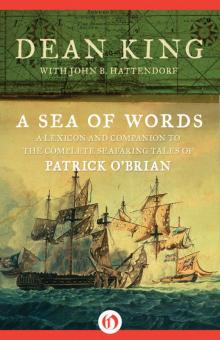 A Sea of Words
A Sea of Words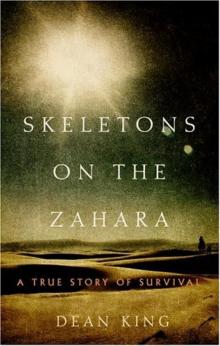 Skeletons on the Zahara
Skeletons on the Zahara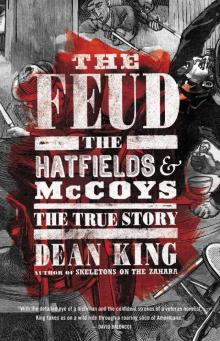 The Feud: The Hatfields and McCoys: The True Story
The Feud: The Hatfields and McCoys: The True Story Every Man Will Do His Duty
Every Man Will Do His Duty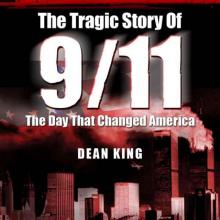 9/11...The Tragic Story of the Day that Changed America: The Terror, The Horror and The Heroes
9/11...The Tragic Story of the Day that Changed America: The Terror, The Horror and The Heroes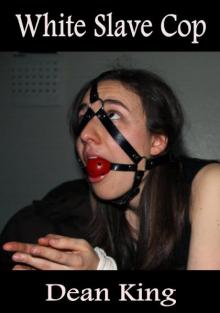 White Slave Cop
White Slave Cop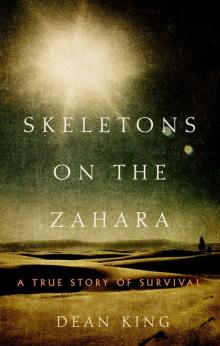 Skeletons on the Zahara: A True Story of Survival
Skeletons on the Zahara: A True Story of Survival